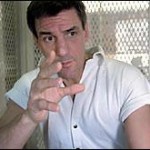THIS PAGE IS CURRENTLY UNDER RENOVATION. APOLOGIES FOR ANY INCONVENIENCE.
This page compiles publicly accessible resources on legal competencies. From Ted Kaczynski (the Unabomber) To Mike Tyson to Jose Padilla, these resources are freely available for instructors, students, practitioners, and anyone else who is interested, most of them online. For training purposes, it’s hard to beat real-life reports and videos, especially from high-profile or otherwise fascinating cases.
 |
Theodore Kaczynski vigorously objected to his attorneys’ strategy to present a mental illness defense. The confessed Unabomber asked to represent himself at trial. In response, the court appointed Bureau of Prisons psychiatrist Sally C. Johnson, M.D. to examine him. Dr. Johnson concluded that Kaczynski was competent to stand trial. The court then found Kaczynski competent, but denied his motion to represent himself as untimely. Two days later, Kaczynski pleaded guilty and was sentenced to life imprisonment without the possibility of parole. The news media succeeded in getting this 1998 report unsealed, although some portions are redacted. Kaczynski later lost an appeal on the grounds that his plea was not coerced. In an eloquent dissent, 9th Circuit Justice Justice Stephen Reinhardt discussed the tensions between the right to represent oneself and the constitutional guarantee of a fair trial. “The government had been spared the awkwardness of pitting three experienced prosecutors against an untrained, and mentally unsound, defendant, and conducting an execution following a trial that lacked the fundamental elements of due process at best, and was farcical at worst,” he wrote. In the final analysis, however, he believed Kaczynski had the right to make that choice. |
THE REPORT |
| Like Kaczynski, Colin Ferguson rejected his attorney’s insanity defense, which was the only viable defense because (like Jared Loughner just recently in Arizona) he had been tackled and apprehended at the scene of his Long Island Railroad massacre. Justice Reinhardt’s prediction in the Kaczynski case of a farcical and pitiful spectacle was borne out here. After a report from a court-appointed psychiatrist (which to my knowledge is not publicly available), the trial judge found Ferguson competent to stand trial and allowed him to represent himself. [Note that this outcome may have been different today, in light of the U.S. Supreme Court’s 2008 opinion in Indiana v. Edwards.] At trial, Ferguson was clearly delusional, for example arguing that the 93 counts he was charged with were related to the year 1993, and had it been 1925 he would have been charged with only 25 counts. He was convicted in 1994 and sentenced to 315 years in prison. Court TV videotaped the entire trial (which was overshadowed by the OJ Simpson trial) and released a VHS tape, copies of which can still be found for purchase. |
THE VIDEO |
 |
 |
The case of Ralph Tortorici is yet another classic example of the injustice of allowing an incompetent defendant to stand trial. Ralph Tortorici was psychotic in 1994 when he injured a fellow student during a hostage takeover at the State University of New York. He underwent competency restoration treatment and was found competent to stand trial despite remaining highly delusional. His attorney decided to preent an insanity defense. On the second day of jury selection in his insanity trial, the prosecutor hired an expert to evaluate Tortorici’s sanity. (Whereas legal competency pertains to one’s present abilities to understand and reason, sanity refers to one’s mental state at the time of a past offense; persons acquitted as insane typically go to locked psychiatric hospitals.) Upon meeting with Tortorici, Dr. Lawrence Siegel realized the defendant was floridly psychotic and incompetent. He wrote a letter to the prosecutor explaining the need to defer a sanity assessment until the defendant could “participate in the examination in a rational and competent manner.” The prosecutor presented this letter to the trial judge, who ignored it. Tortorici was tried in absentia, convicted on all 11 counts after just an hour or deliberations, and sentenced to prison. Two months before the U.S. Supreme Court was slated to hear his appeal, he was found dead, hanging from a bedsheet in his cell. |
THE LETTERPBS Frontline episode: “A Case of Insanity” |
 |
THE VIDEO |
Although competency to stand trial is the most commonly assessed competency in the criminal arena, competency to be executed is another type. The U.S. Supreme Court has ruled that it is cruel and unusual punishment to execute someone who does not understand why he is being put to death. Scott Panetti, a Texas man with schizophrenia, thinks the government wants to kill him to stop him from preaching the gospel. Like Ferguson, Panetti was allowed to represent himself at trial despite being floridly psychotic. Wearing a purple cowboy suit and mimicking a John Wayne character called the Ringo Kid, he blamed the 1992 killings of his parents-in-law on another personality named “Sarge.” He tried to subpoena Jesus Christ, the Pope, and John F. Kennedy. In 2008, a U.S. District Court found Panetti competent to be executed. Although I am unaware of any publicly available competency reports in this case, an online video produced by the Texas Defender Service is educational. |
|
|
 |
There are many types of competency outside of the criminal arena. Indeed, in some professions — law enforcement, medicine and commercial aviation, among others — one must also be fit (or competent) to practice. In 1998, at the behest of the Nevada Athletic Commission, Mike Tyson underwent a series of evaluations to determine whether he was mentally fit to box. Due toa Nevada Supreme Court ruling, this is one of the most extensive sets of publicly available competency resources. (Thanks to clinical psychologist Leonard Holmes for compiling these materials at about.com.) As Dr. Holmes notes, there is an irony to asking psychologists, psychiatrists and neurologists to determine whether someone “is sane enough to compete in a sport which involved inflicting temporary brain damage on your opponent.” |







